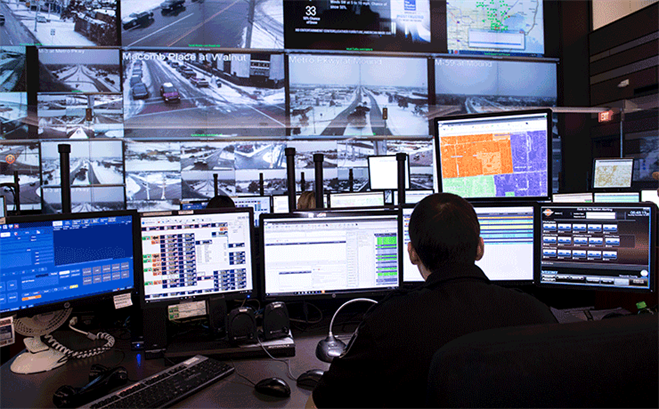How Live Video Transforms Situational Awareness
January 03, 2024 by Nitin Kartik, Director of Product Marketing at Carbyne

According to the National 911 Progress Report, 86% of 911 calls are made through wireless devices.
However, many times law enforcement officers don’t have access to the modern technology that the general public uses daily.
Getting eyes on the scene of the emergency can positively and dramatically improve situational awareness for call-takers, dispatchers, law enforcement officers, firefighters, and paramedics.
Call-Takers
Public Safety Answering Points (PSAPs) are staffed by two critical functions: call-takers and dispatchers. Call-takers are the first people that respond to a call for service and as such they are often referred to as the first first responders.
Call-takers have the thankless job of calming down callers during times of panic and trying to determine the nature of the emergency, so they can help dispatch the right field response.
If eyewitness testimony is unreliable, one can only imagine the potential for misinterpretation when a caller who has just experienced an emergency is trying to describe the scene to the call-taker.
Instead of a verbal description of the scene, modern technology enables call-takers to get live video streamed from the caller’s phone, taking misinterpretation errors out of the emergency response equation.
All a call-taker needs to make this happen is a cloud-native call-handling system that supports live video without needing to download an app.
Dispatchers
Dispatchers are the operators who direct field responders (law enforcement officers, firefighters, and paramedics) to the caller’s aid.
While large PSAPs have separate and distinct staff who handle call-taking and dispatching functions, many smaller PSAPs have the same individuals handling both functions of call-taking and dispatching.
Regardless of the setup, the possibility of misinterpretation between the caller and call-taker using verbal communication is unfortunately amplified in the call-taker-to-dispatcher communication.
Live video from the caller that is accessible to the dispatcher further ensures that when she is directing field responders to the scene, she has total situational awareness to ensure effective response.
Law Enforcement Officers
According to the FBI Crime Data Explorer, there has been a 35% increase in the nation’s homicide rate in the past decade.
Law enforcement officers put themselves in harm’s way every day on the job since they have no guarantee they will arrive home unharmed at the end of their shift.
When responding to emergencies, law enforcement officers have to make split-second decisions about the use of force and the level of risk they are taking on themselves.
While hearing about the situation verbally as relayed from the caller to the call-taker to the dispatcher can provide some basic situational awareness, live video from the caller can do more.
When this live video is transmitted directly to the officer’s mobile device — without having to download an app — can mean they arrive on the scene with total situational awareness and maximize their chances of effectively dealing with the emergency at hand.
Firefighters
Of the more than one million firefighters in the nation, 67% are volunteer firefighters according to the National Fire Protection Association (NFPA).
Fire crews arrive on scene every day putting themselves in harm’s way, and around one in five firefighter fatalities are on scene at non-fire calls according to NFPA.
Hearing about a fire incident verbally conveyed from the caller to the call-taker to the dispatcher to the firefighter leaves a large opportunity for miscommunication and firefighters may arrive unnecessarily or unprepared.
Having live caller video directly transmitted to the firefighter’s mobile phone without having to download an app can mean they can:
- Assess the situation beforehand and decide that it is not necessarily a fire incident
- Arrive fully equipped with the right equipment to ensure the safety of firefighters and callers alike.
Paramedics
There are more than 173,000 paramedics across the nation according to Zippia.
Whether a caller is experiencing a heart attack or has suffered a fall, these individuals provide essential medical care until the caller can be transferred to a hospital or clinic.
Given that the U.S. has approximately one paramedic for every 1,800 people, these individuals are often understaffed yet still respond to multiple medical emergencies.
Performing triage upon arrival based on verbal communication can, unfortunately, result in under-dispatching or over-dispatching and ultimately inefficient emergency medical response.
With live caller video, paramedics can visually assess the patient prior to arrival and ensure they triage effectively and deliver the right care to the right patient at the right time.
Whether you are a caller experiencing an emergency, a call-taker, dispatcher, law enforcement officer, firefighter, or paramedic, modern technology can help each person in these roles do what they do best.